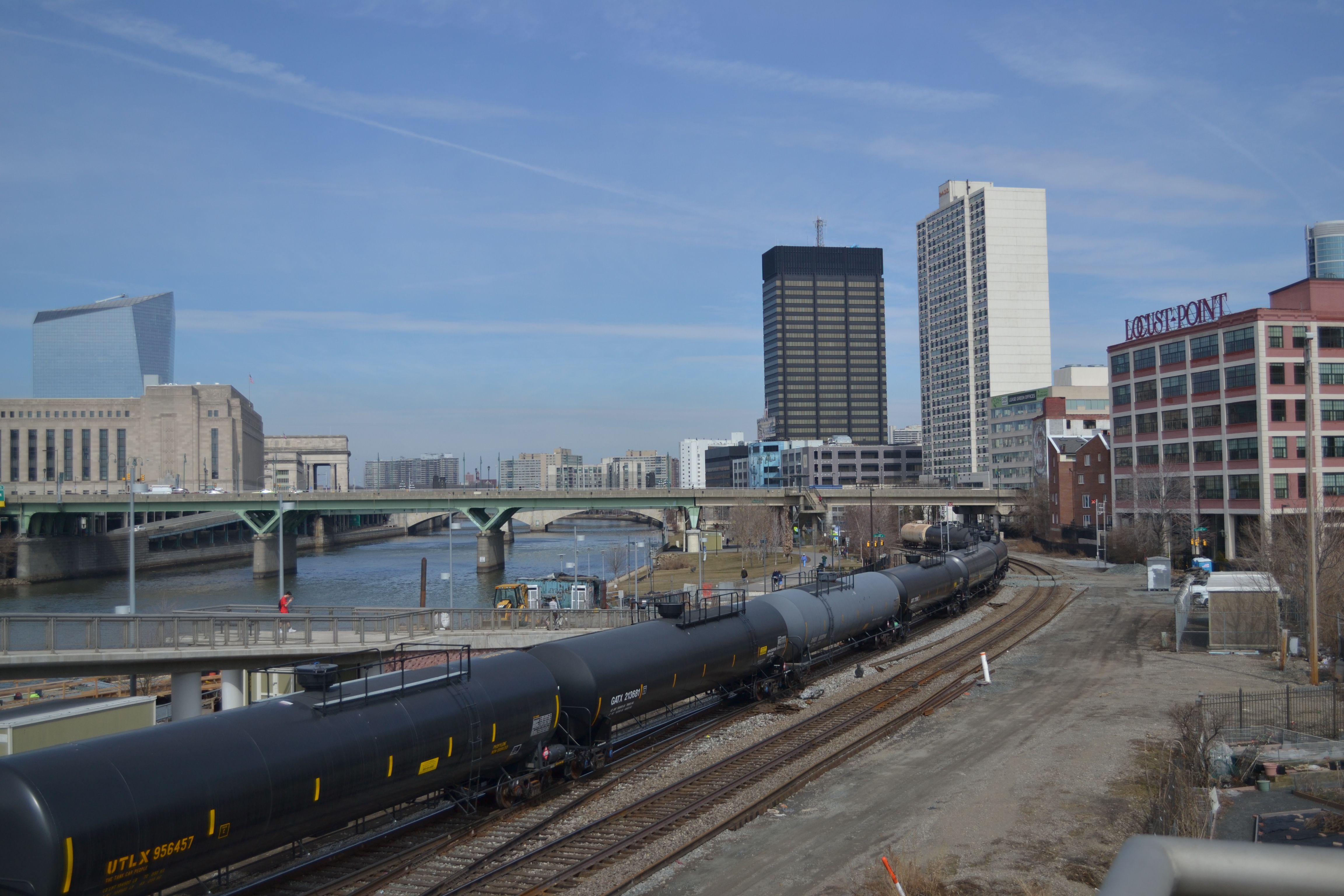CSX testifies on derailment, 25th Street Bridge

The January incident that derailed seven freight cars and left two of those cars leaning perilously over the edge of the Schuylkill Arsenal Railroad Bridge has become a poster child for current freight transportation concerns. It has also thrust the CSX-owned 25th Street Bridge in Grays Ferry into the limelight.
Yesterday two City Council committees held a joint public hearing to investigate this winter’s train derailment and explore the issue of CSX infrastructure and operational safety.
“I think we all get concerns raised by the residents when they see hazardous materials going by on the rail,” said Councilman Bill Greenlee.
CSX officials attended the hearing and explained that the derailment occurred during scheduled maintenance because crews did not properly attach temporary fasteners. The derailment was not due to the structural integrity of the Schuylkill Arsenal Bridge, which was inspected just months before the derailment in September and October.
That being said, CSX is increasingly busy. Today the company operates 21,000 miles of track and runs 13,000 trains on a given day. CSX transports more than six million freight carloads annually. Quintin Kendall, CSX vice president of state government and community affairs, said as demand for crude oil transportation increases, CSX recognizes that infrastructure needs to be carefully monitored.
Kendall said CSX is committed to increasing track inspections on mainline routes where crude oil trains operate. CSX has personnel doing semi-weekly visual inspections. Where CSX used to do semi-annual rail infrastructure tests with advanced technology including ultrasonic testing, CSX now plans to do inspections three times per year.
CSX is taking additional safety measures as well – like performing an analysis to determine the safest routes for crude oil to be transported and investing $5 million in a fund to educate first responder teams.
Rail bridges: Safe for trains, but are they safe for pedestrians?
For years, the 25th Street Bridge has been spalling – dropping chunks of concrete onto the road, and sometimes vehicles, below. The extreme weather this winter has only exacerbated the problem. While the City is aware of the situation, it is out of the Streets Department’s jurisdiction and therefore largely out of the City’s hands.
The Streets Department is responsible for inspecting and maintaining 163 bridges throughout the city. Rail bridges, though, are maintained and inspected by their owners and must meet Federal Rail Administration (FRA) standards. In the case of the 25th Street Bridge, that means CSX is responsible for inspecting and maintaining the structure.
Another caveat is that FRA safety standards focus on whether or not trains can cross a bridge safely. The FRA does regulate or monitor “the beauty of it,” said Larry Kish, a regional administrator for the FRA.
That means a bridge can pass safety inspections even if it, as is the case with the 25th Street Bridge, is dropping large chunks of concrete onto the road below. Kendall said when CSX inspectors do visit bridges, they do not check for concrete that has fallen onto the roadway below. Instead, reports of debris are dealt with on a case by case basis.
Kendall said CSX is committed to improving the 25th Street Bridge and has already taken action.
“The structure clearly presents public safety challenges and we need to do a better job with those,” he said.
On February 18, CSX hired a Philadelphia-based construction company to examine the 25th Street Bridge and to remove any concrete that is or could easily become loose. The process was only expected to take 15 days, but three weeks later, crews have only completed the work on half of one side of the structure.
“It’s not because they’re not working hard,” Kendall said.
He said the winter weather has had a similar effect on the “skin” of the bridge as it has had on area roads plagued by potholes.
Maintenance work that CSX had planned to do this spring will be moved up and completed immediately. CSX will also inspect the bridge’s drainage systems to ensure clogged drains are not causing additional water damage.
“This is something that there needs to be a greater focus [on], and there is now a greater focus that not only the rail traffic is safe, but also the communities are safe as well,” Kendall said.
WHYY is your source for fact-based, in-depth journalism and information. As a nonprofit organization, we rely on financial support from readers like you. Please give today.



